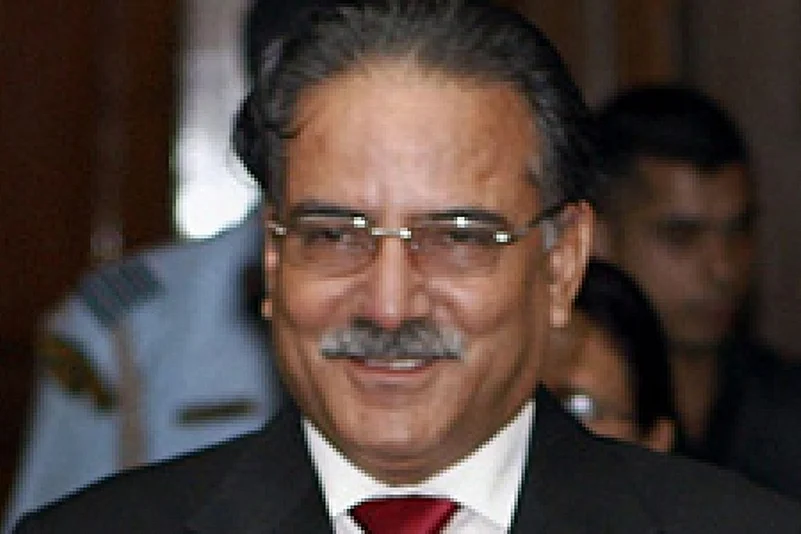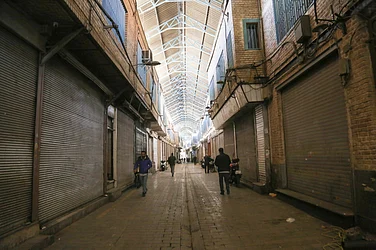This week, Nepali Prime Minister Pushpa Kamal Dahal ‘Prachanda’ is travelling to Beijing from New York. This is his first official visit to China after coming to power in December 2022.
During his week-long trip on September 23-30, the visiting dignitaries will meet with Chinese Premier Li Qiang and have an audience with President Xi Jinping. Several agreements will also be signed.
Prachanda’s first visit to China as Prime Minister of Nepal was in 2008. That visit was dubbed as historic as it broke the tradition of making the first foreign visit to India. Yet this time around, Prachanda decided to revive the tradition and went to India first. Perhaps, he wanted to be more practical although there are no such compulsions to do so.
The visit to China, however, becomes important at least for three factors. First, it is materialising right after China issued its so-called ‘Standard Map’ which did not include Nepal’s new official map. Second, Chinese projects such as Pokhara and Lumbini international airports are on the verge of becoming a burden on the Nepali state. Third, China is all prepared to revisit the modus operandi of the Belt and Road Initiative (BRI) which provides an opportunity to express its position on some projects it wishes to undertake.
The recent statement of Chinese Ambassador Chen Song at a seminar in Kathmandu has become controversial. Part of the reason is Song’s prescription on development where he said that Nepal should align with the Chinese path of development. He did not stop there but went a step further to blame India for creating obstacles for its smaller neighbours including Nepal. It is, however, not the first time. Successive Chinese envoys in Kathmandu have been vocal, some of them even ‘micro managing’ Nepal’s so-called communist political parties.
When Nepal signed a trade and transportation agreement with China in 2016, the mood in Kathmandu was euphoric. The country became further elated when it signed the BRI agreement in 2017. The agreement among others sold dreams of Chinese rail coming through the difficult and rugged terrain of the Himalayas to Kathmandu.
The major twist in the relations between the two countries emerged when nearly two-thirds Nepal Communist Party (NCP) formed a majority government in 2018. Both NCP and China were upbeat about it. There were reasons for that as China is said to have played a crucial role at least in two ways. First, it aided in bringing major communist parties together and formed NCP and later installed it in the government. Second, for China at the time, NCP was Nepal and Nepal was NCP and interactions and engagements with all other political parties/forces/actors were minimal if not non-existent.
However, today, neither the trade and transportation agreement has come into operation nor the projects under BRI are moving ahead. The NCP is also not intact. Nepal-China relations are also not at the same level. Whether one agrees or not, all is not well with the relations. China, unlike in the past, has been taking an active part in the internal politics of Nepal. It has begun projecting some of the Nepali political parties either as pro-west or pro-India, something that did not go down well with the parties.
During the Covid-19 pandemic, China which observed strict lockdown closed all the operational borders between the two countries including the Korala border which is near the Mustang area. This is still closed and has affected the grazing areas of yaks in the northern border and affected the livelihoods of people living in the region.
While Nepal is in the process of implementing projects under the Millennium Challenge Corporation (MCC) of the United States despite strong covert and overt opposition from China, likewise, a good number of developmental projects are underway between Nepal and India. All these developments have not pleased China.
Nepal-China relations are built around three major factors. First, Nepal recognises Tibet as an integral part of China. Second, Nepal adopts ‘One China Policy’ with regard to Taiwan. Third, Nepal does not allow its territory to be used against China. By and large, Nepal has been adhering to these factors wholeheartedly. Paradoxical as it may be, yet Nepal has to convince, time and again, about its commitment towards ‘One China Policy’.
On the other hand, China has been shifting its policy towards Nepal over the years. For example, there was a time when Nepal was part of Mao’s ‘Five Finger Strategy’ of which Tibet was ‘palm of a right-hand’ and with five fingers on its periphery: Ladakh, Nepal, Sikkim, Bhutan, and North-East Frontier Agency (now known as Arunachal Pradesh of India). The Five Finger Strategy was rife in Beijing during 1940-50s but it does not hold much water anymore. This, together with the rise of China had created a ‘security dilemma’ for smaller states that led some of them to sign treaties mainly with India. Things, however, have changed and China projects itself as a benevolent power, and self-declared guarantor of the territorial integrity and sovereignty of many smaller states — at least in principle.
Changing contours of Nepal-China relations
Along with the BRI —the so-called signature project— China has also floated several other initiatives such as the Global Development Initiative, Global Security Initiative, and Global Civilisational Initiative. Together, they work as instruments for China to become a glorious state once again. They are developed in line with China’s worldview which lays emphasis on the fact that all under heaven —Tianxia— treats the entire world as a single basis of the international system rather than looking from the perspectives of the ‘nation-state’ that we live in today.
They are also the tools to impose the Chinese worldview and China is pushing Nepal hard to be part of them. While some of them are developmental and aligned with the United Nations’ (UN) sustainable development goals (SDGs), there are projects like GSI which are overtly geopolitical and value-laden which may not be suitable for Nepal.
China certainly has been a trusted neighbour of Nepal. It has provided tremendous support and assistance to Nepal with regard to the development of its infrastructure. Of late, China is also proposing to build trans-Himalayan railways. Yet fact remains that Nepal certainly cannot go for such big projects like building railways with Chinese loans. Nepal neither has the capacity nor do such projects look plausible. Instead, critics say such projects will spoil the Himalayan ecosystem. With the re-emergence of China as a global power, its behaviour towards neighbours is changing. China has increased its interactions and engagement at multiple levels in Nepal. China appears to have been using such interaction to create and consolidate its own lobby to serve its interests
What's next?
While China is supposedly a communist country, Nepali society is outrightly ‘consumer-based’ and prefers to have a ‘Western style lifestyle’ yet they take pride in Sanatan Sanskriti. Some may even opt for Chinese style ‘development and nationalism’ but both are not really attractive and practical. There is a mass migration of youths towards the Western hemisphere who have their own imagination of worldviews that may create, yet again, its own momentum in the future. What is sure, however, is that this will not allow China to expand its relations beyond the clientele level. Such relations, however, may benefit China as they construct befitting opinions. For years, they have developed a narrative that ‘China does no wrong’ in Nepal which certainly is not true.
China’s blended ‘infrastructure and developmental’ diplomacy demands all other countries to rally behind, which only suggests that like all other superpowers, China is no different when it comes weaponisation of ‘development’.
Yet uncertainty looms large at a time when the Himalayan region is becoming geopolitically volatile. China’s recent cartographic aggression may further escalate tension in the region and beyond.
(Views expressed are personal)






















